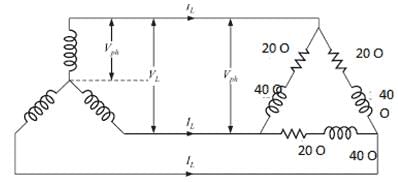Test: Three-Phase AC Circuits - 2 - Electrical Engineering (EE) MCQ
10 Questions MCQ Test - Test: Three-Phase AC Circuits - 2
For an 8-pole induction motor supplied with power by a 6 pole Alternator at 1200 revolutions per minute, the value of motor speed at slip of 3% is –
In a squirrel cage induction motor, the rotor slots are
The name of the Induction motor comes from the fact that ______.
For a balanced three phase, three wire system with input power of 10kW, at 0.9 power factor, the readings on both wattmeter are _______ respectively.
For the below star connected network of equal resistances, if the Wattmeter reading is 5kW and ammeter reading is 25 Amperes, the power factor, resistance and inductanceis _______ respectively.

For a three-phase delta connected load, fed from a star connected network, the power transferred to the load is

For a three phase, three wire system, the two Wattmeter read 4000 Watts and 2000 Watts respectively. The power factor when both meters give direct reading is _______ ?
















